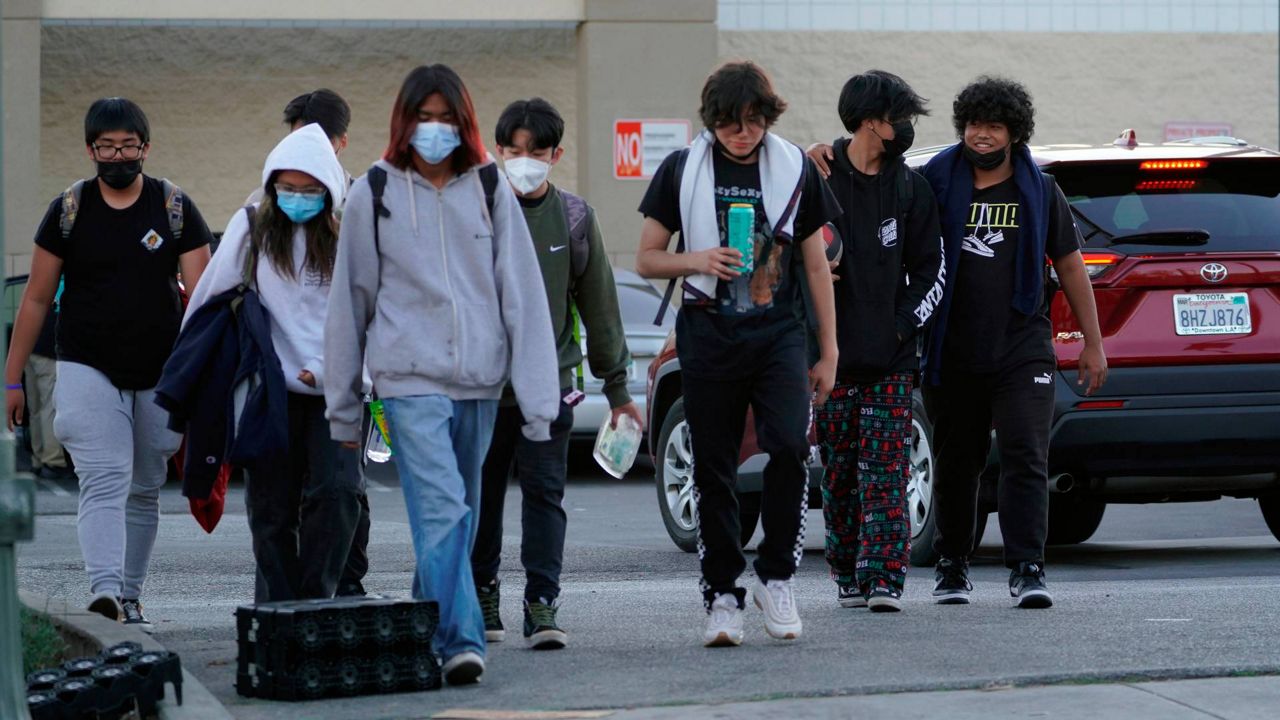More than a third of high school students in the United States reported experiencing poor mental health during the COVID-19 pandemic, according to a new survey by the Centers for Disease Control and Prevention.
What You Need To Know
- More than a third of high school students in the United States reported experiencing poor mental health during the COVID-19 pandemic, according to a new survey by the Centers for Disease Control and Prevention
- Forty-four percent said they persistently felt sad or hopeless over the previous year, up from 37% in 2019
- More than half of high schoolers said they experienced emotional abuse by a parent or other adult inside their homes, including being sworn at or insulted; 11% said they experienced physical abuse
- The data are even more concerning for lesbian, gay and bisexual students, as well as female adolescents
- The survey did not explore the relationship between the pandemic response — including school closures and virtual learning — and mental health
The health agency conducted the survey of about 7,700 ninth- to 12th-graders from January to June 2021. Thirty-seven percent said they experienced poor mental health during the pandemic and 44% said they persistently felt sad or hopeless over the previous year, up from 37% in 2019.
More than half of high schoolers said they experienced emotional abuse by a parent or other adult inside their homes, including being sworn at or insulted. Eleven percent said they experienced physical abuse.
And 24% of students said they went hungry because there was not enough food in their homes.
“Our data make it clear that young people experienced significant disruption and adversity during the pandemic and are experiencing a mental health crisis,” said Kathleen Ethier, director of the CDC’s division of adolescent and school health.
The data are even more concerning for lesbian, gay and bisexual students, as well as female adolescents.
Lesbian, gay and bisexual students were more than twice as likely to report suffering from poor mental health than their heterosexual counterparts (64% vs. 30%), 56% more likely to be emotionally abused in the home (78% vs. 50%), twice as likely to be physically abused (20% vs. 10%) and about five times as likely to attempt suicide (26% vs. 5%).
Female students, meanwhile, were twice as likely to suffer from poor mental health than males (49% vs. 24%), 34% more likely to be emotionally abused (63% vs. 47%) and more than twice as likely to attempt suicide (12.4% vs. 5.3%).
Ethier suggested certain groups might have been affected by “stigma” factors, including bullying.
“I think some of the same factors that are related to mental health prior to the pandemic are also related to mental health issues during the pandemic,” she said. “The role of social isolation, I think, is really key. So to the degree to which young people feel connected definitely positively enhances their mental health.”
Being further isolated during the pandemic, Ethier said, likely exacerbated those issues.
The analysis did not ask about students’ gender identity, but Ethier said other studies indicate that transgender teens experience greater levels of violent.
“So we would expect to see potentially more extreme outcomes for transgender youth,” she said.
The CDC officials added that there was a clear correlation in mental health between students who felt a sense of being cared for, supported and belonging at school — called “school connectedness” — and those who did not.
Poor mental health can affect students’ grades, as well as lead to increased risk of using drugs, experiencing violence and affecting sexual behaviors.
“These problems can have lasting negative effects well into adulthood,” said Dr. Jonathan Mermin, director of the CDC’s National Center for HIV, Viral Hepatitis, STD and TB Prevention.
Mental health among high school students was already on the decline before the pandemic, the health officials noted. The rate of persistent feelings of sadness or hopelessness had climbed from 26% to 37% from 2009 to 2019, while the rate of students who said they had seriously considered suicide jumped from 14% to 19% over the same time.
The survey did not explore the relationship between the pandemic response — including school closures and virtual learning — and mental health. But Ethier said, “I think what this study does show is just the levels of disruption, the degree to which families were experiencing stress and the impact of that stress on young people.”
She added the survey’s findings could help school officials address mental health in the future.
The survey also asked students about whether they had experienced racism both before and during the pandemic. Asian (64%), Black (55%) and mixed-race (55%) students reported the highest levels. The survey could not determine how much the pandemic might have contributed to reported racism.



